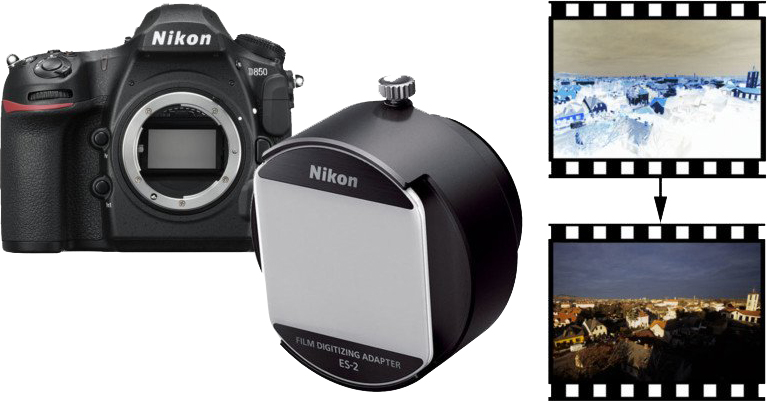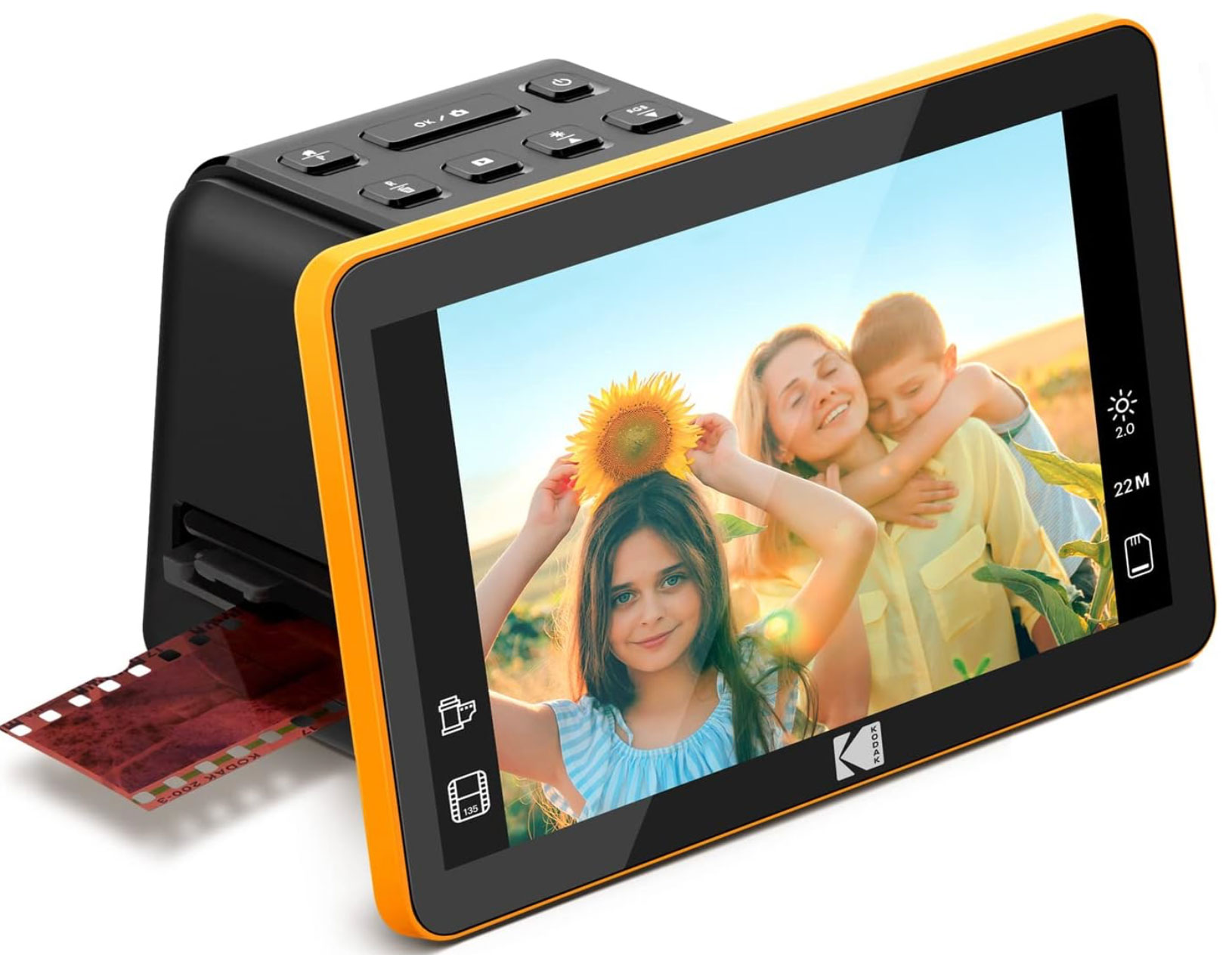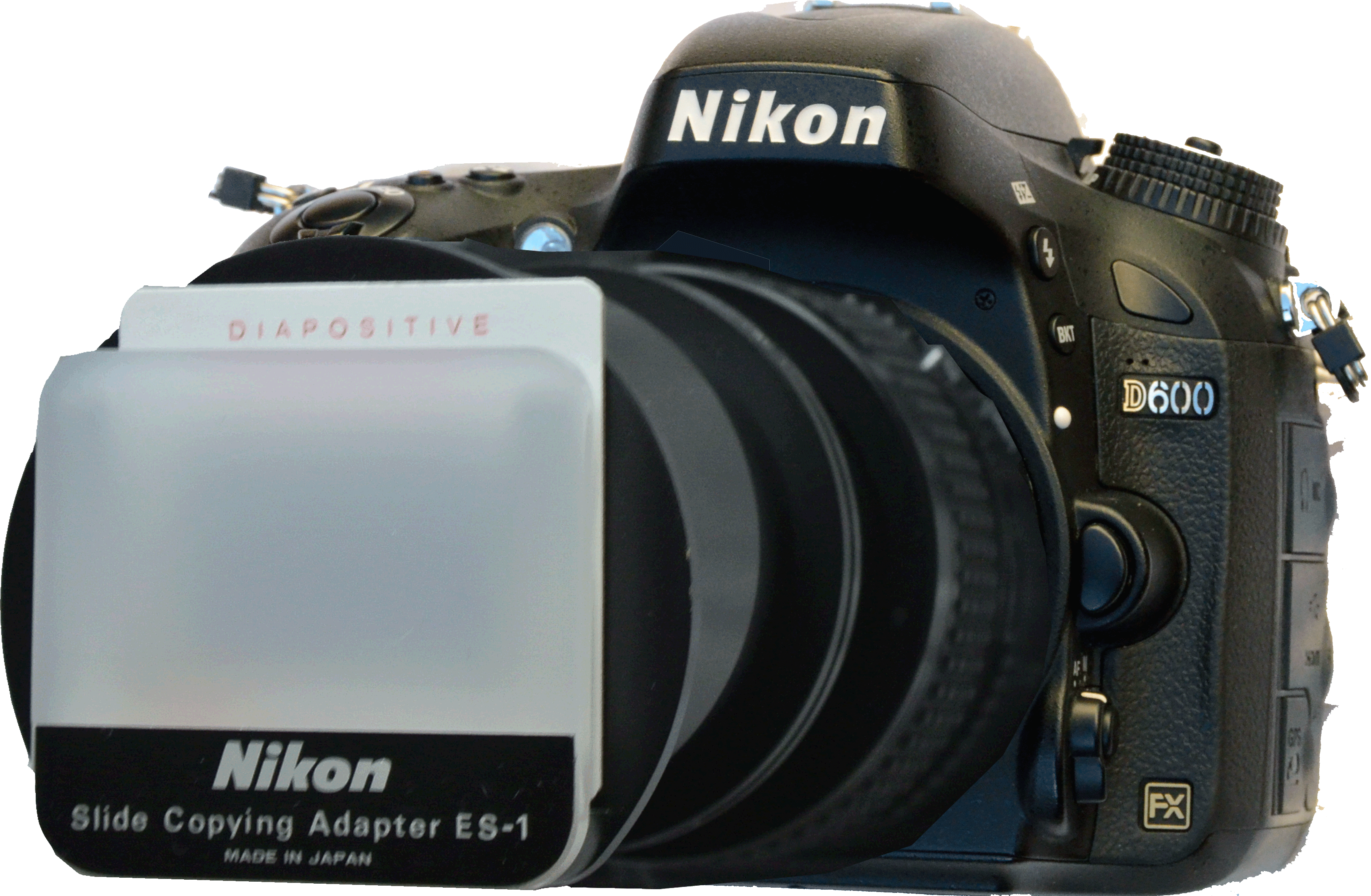|
Digitalization of 24 x 36 slides and negatives |
Like any photo hobbyist or professional photographer, I was confronted quickly with the problem to digitalize my slides and negative.
Indeed, once the photo equipment became mostly digital oriented and the problem of organization and storage of the photographs solved, many people wish to digitize his old silver production.
|
full frame equipment |
I quickly abandoned the idea to treat several thousands of slides or black & white or color negatives with a slide scanner.
In seventies or eighties, it was frequent to find an accessory for reflex camera to duplicate the slides: an extension tube with a slide adapter
and frosted glass, the whole being screwed in front of a lens or having its own convergent lens. It is possible to reproduce personal slides with this simple system.
The result often suffered from denatured colors and especially of a strong contrast. With "digital age", the software correction of the colors became very easy. The functions of contrast and corrections of the colors are standard functions in much software.
Some other treatments allow a High and low correction Light: DXO but also the function daylight integrated built-in some Nikon cameras.
|
For the digitization of negatives or slides with format 18mm X 24 mm or lower (110 or Minox format for example), it is better to replace the full format camera by an APS-C camera, like the D7100. The reproduction will occupy the whole image and will be better. All 24 millions of pixels will be used.
For the digitization of negatives or slides with this method, it is imperative to deactivate any stabilization of the sensor or the objective, the set objective box being fixed, the film remains fixed always with respect to the sensor.
Procedure
Set the camera in Aperture priority mode and to fix it between f8 and f11 to have a good field depth but avoiding diffraction.
Set the camera on 200 ISO.
Set the camera in mode JPG Fine.
Set the lens on the 1.0 reproduction ratio.
Set the focus, not on the lens but by sliding the slide copying adapter until you have a correct focus (the picture below shows the real settings).

settings of D600 with Micro-Nikkor
Check the photo frame. It is the most precise and sharp step; the carry-slide must be as horizontal as the camera. A camera with Live View or a 100% viewfinder facilitates these adjustments.
Take the picture then to pass to the following negative or slide.
Check Once the photographs taken, it is necessary to pass to the phase of post-production
I open the photographs under Jpeg in Adobe Photoshop Elements. For negatives, I use an inversion method. For the slides and negative, I resize the photograph, if needed, I use the orders " Accentuation> Auto Color" or " Accentuation> Auto Contrast", even both.
After these operations the photographs are digitized, we have just to rename and classify them. Alternative 1 If you do not have a Full Format equipment or is the format of negatives or slides is 18mm X 24 mm or lower, you can use an APS-C camera. The quality of the reproduction is more dependent on the definition of the sensor than the format of it.
APS-C camera Micro-Nikkor 40 mm/2,8 DX Nikon ES-1 slide copying adapter An APS-C camera can also be used to scan the slides. It is important to choose a camera with the best definition possible: a D7100 with 24 millions of pixels is better than a D7200 or D7500 with 20 million of pixels. You can use the micro-Nikkor 55 mm but also the newest micro-Nikkor 40 mm f2.8 DX with the Nikon ES-1 slide duplicator. Micro-Nikkors 40 mm and 55 mm have both a filter diameter of 52 mm like the ES-1 side duplicator. The procedure is the same as above. Alternative 2 If you have the money, another solution is to use the Nikon D850 as a 45.7-megapixel film scanner as well. The Nikon D850, the ES-2 adapter and its built-in negative digitizing feature
The Nikon D850 is the first Nikon DLSR to have a new built-in Negative Digitizing feature designed specifically for film scanning. Some coolpix, as the 5000, had the same feature available some years ago. Procedure : First, you’ll need to mount a macro lens (Nikon suggests the Nikon AF-S Micro-NIKKOR 60mm f/2.8G ED) to the D850. Next, attach the ES-2 adapter and some 35mm film. The ES-2 scanning adapter has a filter diameter of 62 mm. If you’re scanning strips of negatives, you’ll need the FH-4 Strip Film Holder. If you’re working with positive slides, you’ll need the FH-5 Slide Mount Holder. Reminder : The Nikon D850 has a price tag of $3297, The ES-2 has a price tag of $150 and the FH-4 and FH-5 holders cost $40 and $25, respectively (September 2017). An efficient but expensive solution.
Added 2024 KODAK Slide N Scan Digital Film Scanner
I created this page between 2010 and 2019, I have thus realized the digitization of all my slides and negatives. pierre j.



For small format DSLR cameras, the Olympus OM-D E-M5 Mark II camera allows a 40 million pixel mode by sensor displacement. This mode should theoretically allow a digitization of very high quality, comparable to that of a Nikon D850.

After capturing a 45.7-megapixel image of the negative, the D850 can convert them in-camera into high-resolution positive digital JPEG photos. I agree when Nikon indicates the "time-consuming process involving a film scanner can be done much more quickly". It's up to you to see the benefit of scanning a negative color or a slide with a resolution between 8 and 12 megapixels (for Kodachrome 25) to a negative 45.7 megapixel image.
Replaced the D850 by Nikon Z7 ?
The sensor is same. The stabilization of the Z7 sensor is not useful for digitalization and Z7 has no negatives repro mode.
If Nikon updates the Z7 firmware for this function and for a "Multiple Shift Pixel Shooting", this is possible because its stabilized sensor, then we could have images reproduced with a stronger definition (100 million pixels?).

However today in 2024, if I had to redone this work, I think I will use a scanner on the market such as the KODAK Slide N Scan.
The ease of use is much greater and the quality obtained is sufficient for amateur use.
